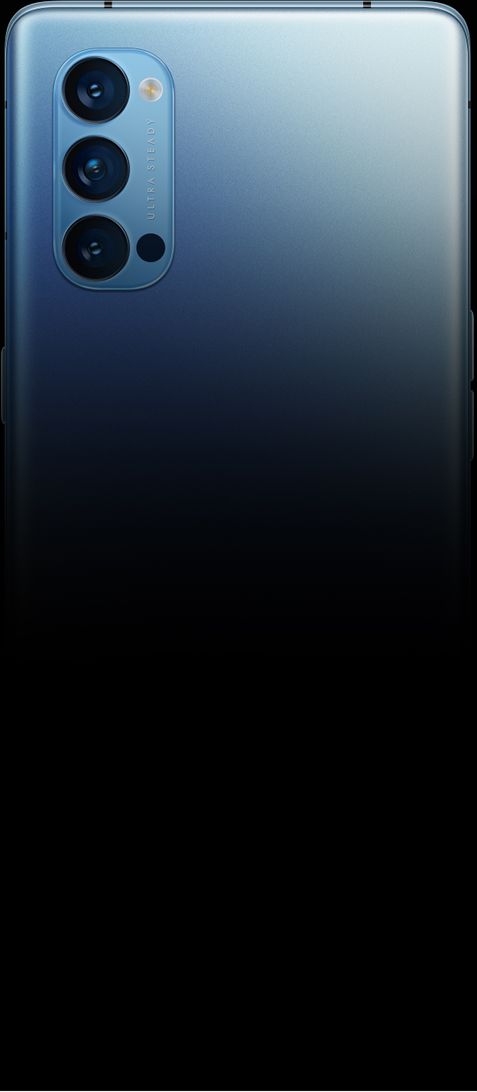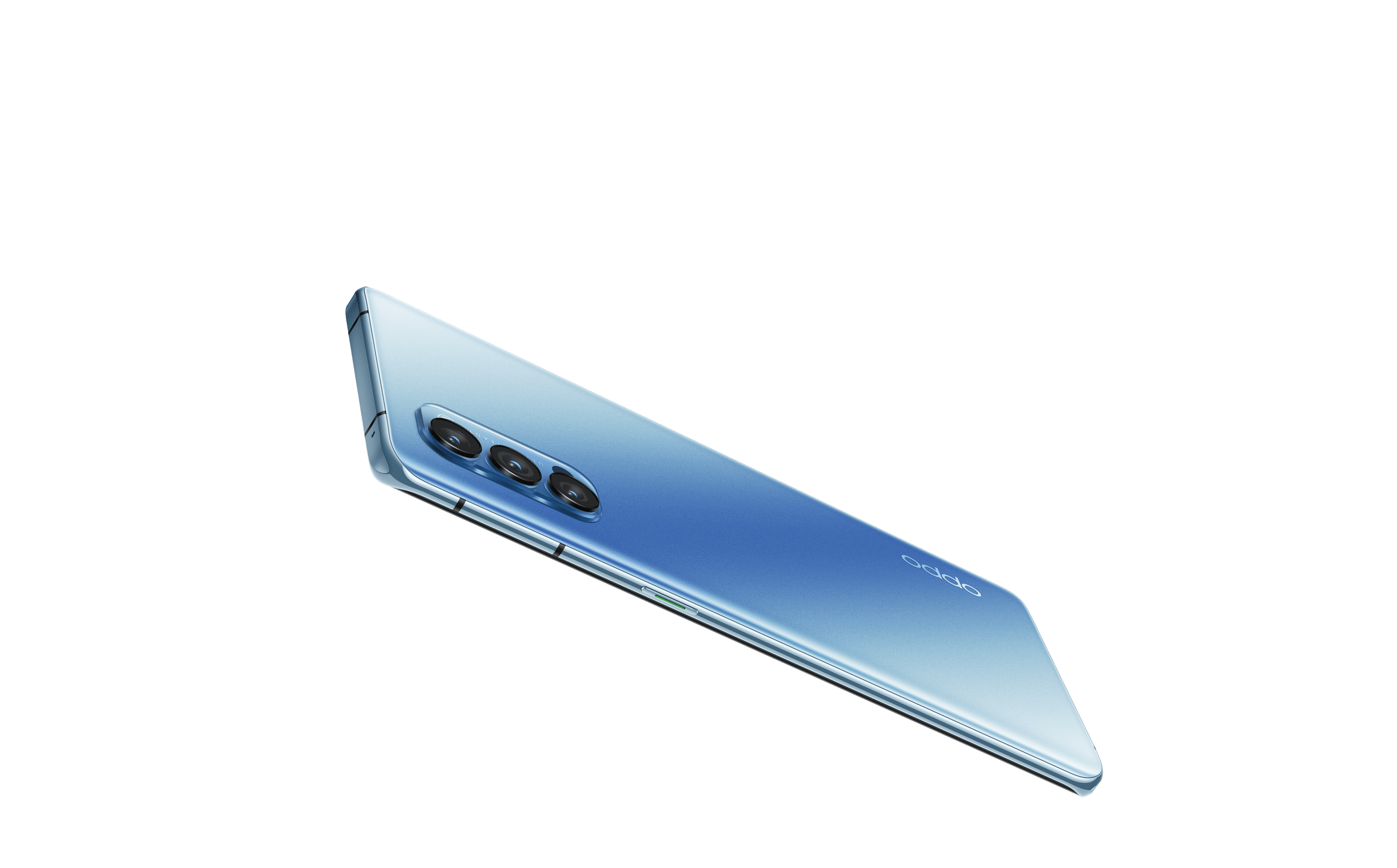, 4 min read
Upgrading OnePlus Five to Oppo Reno4
I upgraded my smartphone OnePlus Five to Oppo Reno4 Pro 5G. The OnePlus Five smartphone has a Qualcomm Snapdragon 835 CPU, while the newer Oppo smartphone uses a Qualcomm Snapdragon 765. I paid 347.17 EUR for the Oppo phone, which I bought at Amazon. I paid 499 EUR in June 2017 for the OnePlus Five, which I bought directly from OnePlus. The Reno4 is not sold worldwide. It seems that it is not sold in UK and in the US. The main reason for the upgrade was that the OnePlus was almost full w.r.t. to storage. The OnePlus only has 64 GB storage. The Reno4 offers 256 GB. Also, RAM increased from 6 GB to 12 GB, which helps when you switch apps.
The first very obvious difference is that the Oppo weights 172g, while the OnePlus weights 153g, the Oppo feels heavier. This only matters if you have the phone in your hand for a longer time. Another striking difference is that the Oppo phone charges very quickly. Within 5-10 minutes you can charge enough for the entire day. Oppo calls this SuperVOOC charging.
The whole package includes phone, charger, USB earphones, case protector, paper leaflets, SIM card stick. After unpacking the new Oppo phone I had to update four times including a reboot each time. After that I am now at ColorOS 12.1, Android 12, security update 5-Apr-2022. Build number is CPH2089_11_F.71, baseband version Q_V1_P14,Q_V1_P14, kernel version 4.19.1157-perf+.
Reno4 Pro looks nice and noble. User experience using this ColorOS is good. The Reno4 Pro should not be confused with the Reno4 or Reno4 Z: Oppo Reno 4 Pro 5G vs Reno 4.

Some technical specs:
| Type | Value |
|---|---|
| CPU | Qualcomm Snapdragon 765 |
| RAM | 12 GB |
| Storage | 256 GB |
| OLED screen | 6.5 inch |
| Screen refresh rate | 90 Hz |
| Screen resolution | 360 x 800 |
| Max. touch sampling rate | 180 Hz, usually 120 Hz |
| Movie aspect reation | 21:9 |
| Certification | HDR 10+ |
| Speakers | Dual Linear Speakers Dolby Atmos |
| Weight | 172 g |
| OS | ColorOS 12.1, Android 12 |
| Camera | 48 MP, 12 MP ultranight, 13 MP telephoto |
| Selfie camera | 32 MP |
| Charging | 65 W |
| Battery | 4000 mAh |

Snapdragon 835 vs Snapdragon 765 (dead link) contains a comparison of those two CPUs. Snapdragon 835 was announced November 2016, while Snapdragon 765 was announced December 2019, i.e., three years later. Key characterics are given in below table.
| Type | Snapdragon 835 | Snapdragon 765 |
|---|---|---|
| Architecture | 4 × 2.45 GHz Kyro 280 (Cortex A73) 4 × 1.9 GHz Kyro 280 Cortex A53) |
1 × 2.3 GHz Kyro 475 (Cortex A76) 1 × 2.2 GHz Kyro 475 (Cortex A76) 6 × 1.8 GHz Kyro 475 (Cortex A55) |
| Cores | 8 | 8 |
| Frequency | 2450 MHz | 2300 MHz |
| Instruction set | ARMv8-A | ARMv8.3-A |
| L1 cache | 128 KB | |
| L2 cache | 2 MB | |
| Process | 10 nm | 7 nm |
| Transistor count | 3 × 109 | |
| TDP | 9 W | 5 W |
Graphics comparison
| Type | Snapdragon 835 | Snapdragon 765 |
|---|---|---|
| CPU name | Adreno 540 | Adreno 620 |
| Architecture | 8 | 8 |
| Frequency | 2450 MHz | 2300 MHz |
| Execution units | 2 | 3 |
| Shading units | 256 | 192 |
| FLOPS | 558 Gigaflops | 600 Gigaflops |
| Vulkan version | 1.1 | 1.1 |
| OpenCL version | 2.0 | |
| DirectX version | 12 | 12 |
Memory comparison
| Type | Snapdragon 835 | Snapdragon 765 |
|---|---|---|
| Memory type | LPDDR4X | LPDDR4X |
| Frequency | 1866 MHz | 2133 MHz |
| Bus | 2 × 32 Bit | 2 × 16 Bit |
| Max bandwidth | 29.8 GBit/s | 17 GBit/s |
| Max size | 8 GB | 12 GB |
Multimedia comparison
| Type | Snapdragon 835 | Snapdragon 765 |
|---|---|---|
| Neural processor (NPU) | Hexagon 682 | Hexagon 696 |
| Storage type | UFS 2.1 | eMMC 5.1, UFS 3.0 |
| Max display resolution | 3840 × 2160 | 3200 × 1800 |
| Max camera resolution | 1 × 32MP, 2 × 16MP | 1 × 192MP, 2 × 22MP |
| Video capture | 4K at 30 FPS | 4K at 30 FPS |
| Video playback | 4K at 60 FPS | 4K at 30 FPS |
| Video codecs | H.264, H.265, VP9 | H.264, H.265, VP8, VP9 |
| Audio codecs | AAC, AIFF, CAF, MP3, Mp4, WAV | AAC, AIFF, CAF, MP4, WAV |
Connectivity comparison
| Type | Snapdragon 835 | Snapdragon 765 |
|---|---|---|
| Modem | X16 LTE | X52 |
| 4G support | LTE Cat. 16 | LTE Cat. 18 |
| 5G support | No | Yes |
| Download speed | Up to 1 GBit/s | Up to 1.2 GBit/s |
| Upload speed | Up to 150 MBit/s | Up to 210 MBit/s |
| WiFi | 5 | 6 |
| Bluetooth | 5.0 | 5.0 |
| Navigation | GPS, GLONASS, Beidou, Galileo, QZSS, SBAS | GPS, GLONASS, Beidou, Galileo, QZSS, SBAS, NAVIC |
Specification according phone leaflet in below table.
| Type | Value |
|---|---|
| Product | CPH2089 |
| Main screen parameter | 16.5 cm |
| Dimension | 159 × 72.5 × 7.6 (mm) |
| Battery | DC 7.74V 1955 mAh/15.13Wh (Minimal) DC 7.74V 2000mAh/15.48Wh (Typical) |
| Camera | 48 Megapixels + 13 Megapixels + 12 Megapixels rear + 32 Megapixels front |
| Operating temperatures | 0°-35° |
| CE SAR | 0.892 W/kg (head) 1.318 W/kg (body) |
| RCM SAR | 1.493 W/kg (head) 1.444 W/kg (body) |
| FCC SAR | 1.19 W/kg (head> 0.42 W/kg (body) 1.19 W/kg (hotspot) |
Radio wave specification according phone leaflet. 33 dBm is roughly 2 W, 23 dBm is roughly 200 mW, 8.5±2 dBM is roughly 5-10 mW. GSM is 2G, WCDMA is 3G, LTE is 4G.
| Radio | Frequency | max output power |
|---|---|---|
| GSM | 850 MHz | 32.5 ± 1 dBm |
| " | 900 MHz | 33 ± 1 dBm |
| " | 1800 MHz | 30 ± 1 dBm |
| " | 1900 MHz | 29.5 ± 1 dBm |
| WCDMA | Bands 1/5/6/8/19 | 24 ± 1 dBm |
| " | Bands 2/7 | 23.5 ± 1 dBm |
| LTE FDD | Bands 1/3/4/28/66 | 23.5 ± 1 dBm |
| " | Bands 2/7 | 23 ± 1 dBm |
| " | Bands 5/8/12/17/18/19/20/26 | 24 ± 1 dBm |
| " | Band 32 | / |
| LTE TDD | Bands 38/39/40/41 | 23.5 ± 1 dBm |
| " | Band 42 | 23 ± 1 dBm |
| 5G NR | n1/n3/n28/n38 | 23 ± 1 dBm |
| " | n40/n41/n77/n78 | 23 ± 1.2 dBm |
| " | n5/n8/n20 | 23.5 ± 1 dBm |
| " | n7 | 22.5 ± 1 dBm |
| Bluetooth | 2.4 - 2.4835 GHz | 8.5 ± 2 dBm (EIRP) |
| 2.4G WiFi | 2.4 - 2.4835 GHz | 16 ± 2 dBm (EIRP) |
| 5G WiFi | 5.15 -5.35 GHz, 5.47 - 5.725 GHz | 15 ± 2.5 dBm (EIRP) |
| " | 5.725 - 5.85 GHz | 10 ± 2.5 dBm (EIRP) |
| NFC | 13.56 MHz | 42 dBµA/m @10m |
A review is here: